Though they first appeared in the mid-1980s, run flat tires (RFT) are now more popular than ever. With some auto manufacturers making them standard in new vehicles, more consumers are asking about run flats, their advantages, and how using them impacts driving.
Run flat tires are tires on which you can continue driving after a puncture so you can take time get to an auto shop or find a safe, level area to change your tire.
You can’t drive on them indefinitely, though. Check the manufacturer’s specifications to find out how fast and how far you can drive on your run flat tires. Bridgestone run-flat tires will allow continued operation even after a loss of some or all inflation pressure for up to 50 miles (80 km) at a maximum speed up to 50 mph (80 km/h.)
There are two primary types of run flat tire systems: the self-supporting system and the support ring system.
In most self-supporting run flat tire systems, the tire features reinforced sidewall construction that will continue supporting the vehicle in the event of air loss. This construction allows continued operation after the loss of air pressure up to the speed and distance specified by the manufacturer.
Support ring run flat tire systems, on the other hand, employ a ring of hard rubber or another structure that can support the vehicle’s weight in an air loss condition.
Since they continue performing even though they’re “flat,” all run flat tires, regardless of the specific system type, may only be used on a vehicle equipped with a Tire Pressure Monitoring System (TPMS). The TPMS alerts you as soon as one of your tires loses pressure. Without it, you might not know you were driving on an underinflated tire.
You don’t have to change your tire in dangerous or uncomfortable conditions. This is perhaps the biggest benefit of run flat tires and is the one of the reasons why they were designed.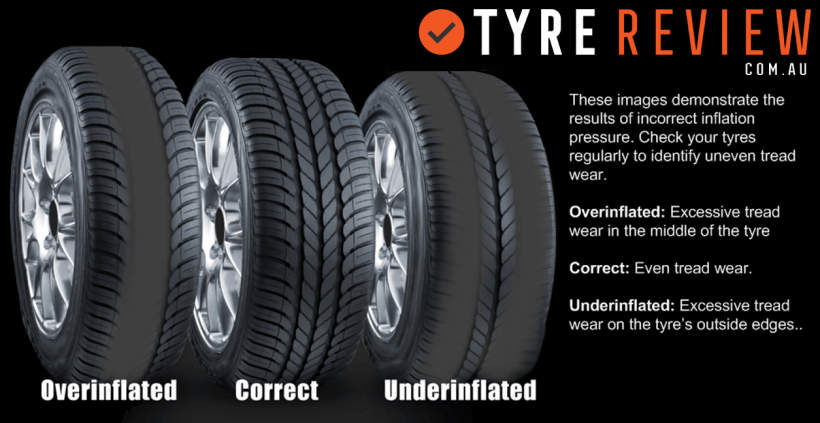 With conventional tires, you have to replace a flat on the spot or have your car towed.
With conventional tires, you have to replace a flat on the spot or have your car towed.
In a puncture situation, run flats are more stable than conventional tires. Since they’re made to support your vehicle even when they contain no air, run flat tires will help you maintain better control in a complete air loss situation than conventional tires.
As consumers continue rating safety high on the list of features they look for in a vehicle, the popularity of run flat tires is expected to grow. Since run flat tires work reliably with interconnected technologies like TPMS, it may only be a matter of time before they become the norm rather than the exception in new vehicles.
There’s never a good time for a flat. That’s why Bridgestone DriveGuard tires are masterfully engineered to keep you moving for up to 50 miles at speeds up to 50 MPH without disruption.
See Details Find Your Fit
There’s never a good time for a flat. That’s why Bridgestone DriveGuard tires are masterfully engineered to keep you moving for up to 50 miles at speeds up to 50 MPH without disruption.
That’s why Bridgestone DriveGuard tires are masterfully engineered to keep you moving for up to 50 miles at speeds up to 50 MPH without disruption.
Every car owner is likely to get a flat tire at some point. Hence, car manufacturers now offer cars with run-flat tires.
That said, it’s tricky to know the distance you can travel with a run-flat tire.
Are you wondering how long your run-flat tires will last?
This guide answers that question and more.
How many miles do run-flat tires last?Most common run-flat tires may do at least a fifty miles distance when the tire is flat. It depends on the brand of your tire and how badly damaged your tire is. When not damaged, run-flat tires will last as long as other tires which is normally 30,000 -70,000 miles.
Table of Contents
A run-flat tire can run flat for a limited time with no air pressure.
That means it is possible to drive your car with a flat tire still. Although, you wouldn’t be able to drive it at an average speed.
For example, if you use a tire brand like Bridgestone, run-flat tires will allow you to continue driving for up to 50 miles. But you will only travel at 50 mph speed. Sometimes even at a lesser speed.
The fifty miles distance can be enough to get you to the next garage or to a safe spot where you can get help. Otherwise, you may need to stop your car and try to get help.
If you have never used run-flat tires before, check your driver’s manual. It should contain all the information you will need about run-flat tires.
How many years do run-flat tires last when not used much?Your run-flat tire can be functional for a limited time. The number of years you can continue to use a run-flat tire will vary from brand to brand.
If you don’t use your run-flat tires much, they can last you 3 to 5 years.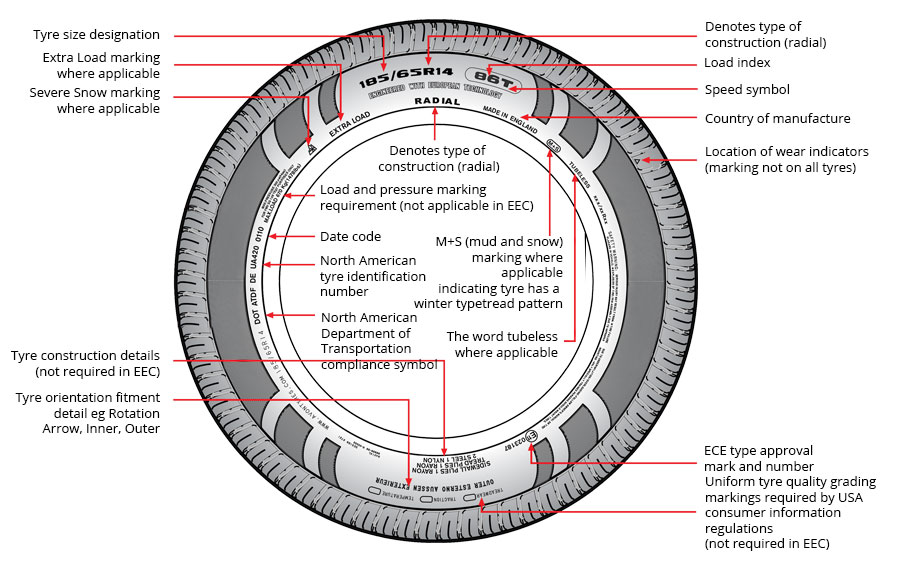 Of course, that will depend on where you store the tires. Or how you take care of them.
Of course, that will depend on where you store the tires. Or how you take care of them.
We’ve got some tips that you can use to keep your run-flat longer.

Like any other tires, you can’t keep run-flat tires for more than ten years on your car. Once they exceed ten years, you need to replace them.
We have a dedicated article on run-flat tire brands.
Go here to see a good overview of all the most-respected run-flat tires companies.
You’ll see that there are many big brands to choose from and today most of the bigger and more well-known tire brands have a line of run-flat tires as well.
Do run-flat tires last longer than other types?Generally, run-flat tires don’t last longer than conventional tires. Most run-flat tires can wear out quite quickly.
A run-flat tire has a thicker, stiffened sidewall that allows the car to carry the load should it goes flat. It will typically be stiffer when you inflate a run-flat tire than the ordinary tire.
This research has found that drivers who use run-flat tires replace their tires 6,000 miles sooner than those using standard tires.

Here is why: A soft tread compound inside every run-flat tire wears out quickly.
Blowouts are another issue that reduces the lifespan of run-flat tires. So, when you use run-flats, you should also expect blowouts.
Especially if you drive your car with old run-flat tires, or don’t heed warning signs.
A run-flat tire may begin to disintegrate slowly.
Most of the time, without warning. Expect this if you don’t take good care of it. Or if you use a repaired run-flat tire for too long. Remember, when the puncture happens to a run-flat tire, it occurs on the sidewall in most cases.
Are run-flat tires worth the price?Run-flat tires are worth the price if you consider that they won’t leave you stranded on the side of the road. Besides, when you use run-flat tires, you don’t need to have a spare wheel.
Still, run-flat tires are more expensive than conventional tires.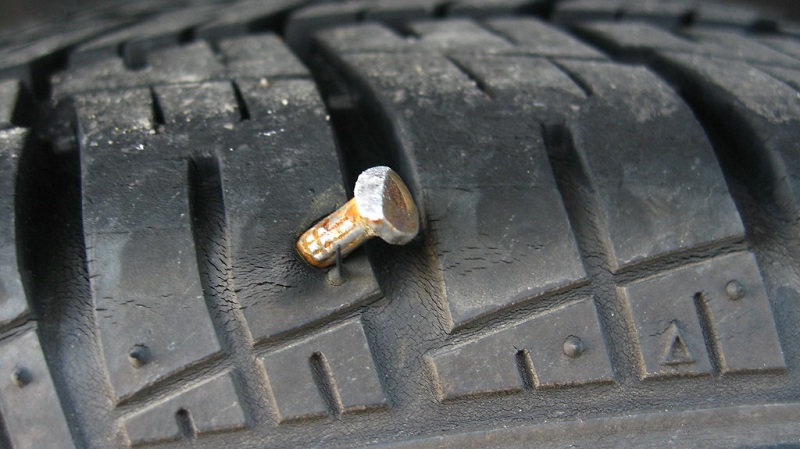 On average, you will pay one-third more for run-flat tires. If you consider that run-flat tires don’t last long, you may feel they are not worth that price tag.
On average, you will pay one-third more for run-flat tires. If you consider that run-flat tires don’t last long, you may feel they are not worth that price tag.
Any catastrophic tire failure may leave you without a spare wheel. Plus, you will pay more to replace or repair your run-flat tires.
Most tire experts don’t recommend repairing run-flats:
If you decide to replace the run-flats with conventional tires, it’s okay.
You can use your existing rims. As long as they fit correctly, conventional tires will work just fine.
How do run-flat tires rate?Run-flat tire’s speed rating shows the acceptable speed that the tire can safely handle over time.
For instance, Bridgestone run-flat tires will still go, even after the tires loses some or all inflation pressure. The Bridgestone will travel for up to 50 miles at a maximum speed of up to 50 mph.
The higher you go beyond the recommended speed, the less are the chances of controlling your car.
Are run-flat tires good on the highway?You can drive on the highway with inflated run-flats.
But your run-flat tire should have certain features. Otherwise, you won’t enjoy driving with inflated run-flats on the road.
First, make sure that the tire has multiple sipes and deep lines. These sipes will allow your run-flat tires to have a hundred percent contact with the surface in all weather conditions.
A perfect run-flat tire should also have irregular tread block patterns. The patterns will give your car optimum tire performance on the highway.
A great run-flat tire should also have potent rubber compounds.
Inflating run-flats work the same as conventional tires. Hence, it’s crucial to maintain air pressure on your run-flat tires. You have to find an air compressor hose and a power source for that hose. Then connect it directly to the valve stem of your tire.
With fully inflated run-flat tires, you can go as fast as you like on the highway.
However, once you get a puncture on your run-flats, you won’t be able to go beyond 50 mph.
Just because tire manufacturers recommend that you can go as fast as 50 mph, that doesn’t mean you should. Some cars may begin vibrating or making strange noises when you try to increase speed. You won’t always enjoy driving your car on the highway with run-flat tires.
Final ThoughtsThere are certain things you need to keep in mind about using run-flat tires. First, only a car with a TPMS or tire pressure monitoring system should have run-flats. This system will alert you when you have a puncture.
This way, you will know that you have a limited time to replace your run-flat tire. Otherwise, your car should use regular tires.
Secondly, you may need to consider changing your vehicle’s suspension before installing run-flats.
Your suspension components like bolt joints, control arm, and coil spring need to be good.
Run-flat tires have a stiffer construction that will take a toll on your tires. So your suspension should be in shipshape.
Old run-flat tires are dangerous for you and other drivers, too. It would help if you always replace your old tires, regardless of tread depth. If your car needs new run-flat tires, don’t settle for old tires because they are affordable.
Was this article helpful?
Great!
Click to share...
Did you find wrong information or was something missing?
We would love to hear your thoughts! (PS: We read ALL feedback)
Name (not required)
Email (not required)
Message
0003Related materials
2 sets of wheels or overboarding - which is more profitable?
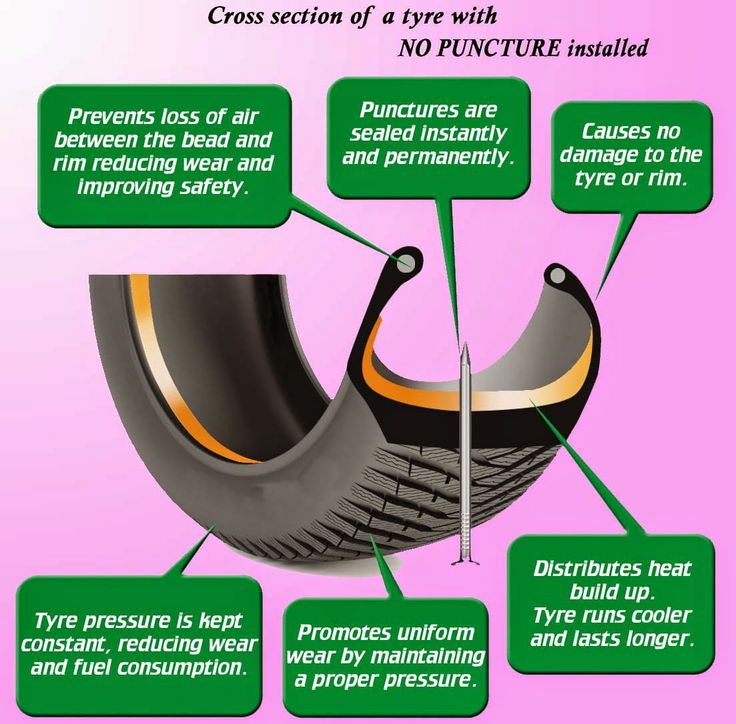 There is a pump in the trunk (but there is no spare)
There is a pump in the trunk (but there is no spare) Inflate the tire to three atmospheres and move off. After 3-5 minutes of travel, stop and check how much the pressure has dropped. At about one, grab the pump again. And so on until you reach the right place.
At a speed of 40 km/h on smooth asphalt with a flat tire, you can safely drive about 2 km. Moreover, most likely, after such a feat, the tire will be able to be pumped up and operated further.
An extra ten meters will not make the weather. After all, it is not clear how much you have already traveled on an "empty" wheel. So don't stop in the middle of the road. It is better to smoothly turn to the side of the road, and if there is a side platform within sight, slowly reach it.
Related content
8 studded tires: test on ice
For example, a sidewall puncture has occurred.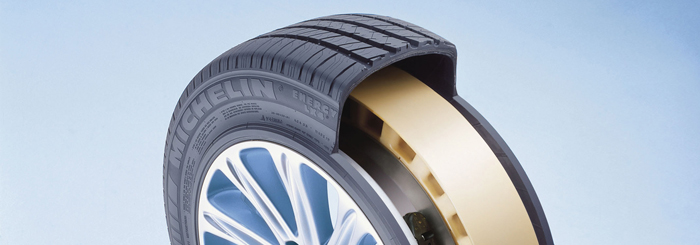 There is nothing to lose - it will not be possible to reanimate the tire for further operation. But you can stretch 40 km / h from a dozen kilometers to a tire fitting. Be careful: closer to 15 km, the tire will start to smoke, crunch and fall apart. "Debris" can damage the apron, locker or bumper plastic. It's better not to bring it up.
There is nothing to lose - it will not be possible to reanimate the tire for further operation. But you can stretch 40 km / h from a dozen kilometers to a tire fitting. Be careful: closer to 15 km, the tire will start to smoke, crunch and fall apart. "Debris" can damage the apron, locker or bumper plastic. It's better not to bring it up.
Related materials
7 ways to "shoe" you in change shoes
The colder it is outside, the longer it will take for the tire to reach critical temperature and the further you will drive.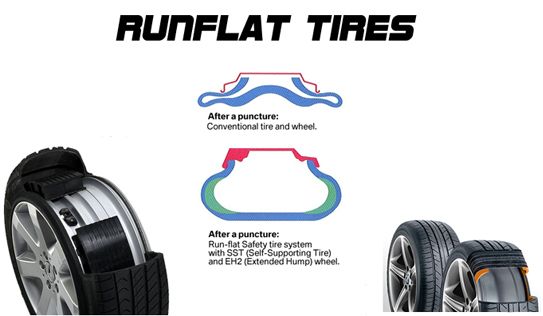 But in the heat, the tire warms up faster, which means that the range will be reduced.
But in the heat, the tire warms up faster, which means that the range will be reduced.
First of all - from the strength of the sidewalls and carcass of the tire. A thick sidewall will help you get to the tire shop, a thin sidewall will “die” much faster. Therefore, on a crossover (SUV tires have reinforced sidewalls) you will drive further under the same conditions than on a passenger car.
Photo: Depositphotos
Our new video is that lada? Yes!
Did you like the note? Subscribe and you will always be in the know!
Driving Zen
News smi2.ru
On the road, various troubles can happen to a car and a rubber puncture on a car is a common case.
The absence of a spare wheel or a standard "roll-in" seriously complicates the situation. If the driver has the skills, you can put a temporary patch on the puncture, otherwise you will have to order a tow truck.
We recommend carrying a spare wheel, a repair kit for various occasions, the necessary tools, then you can get out of any traffic situation with dignity. If all this is not there, then you can drive on punched rubber a short distance to a service station or tire fitting. We are not talking about hundreds of kilometers of travel, we are talking about a short distance.
Leakage of air from a car tire can occur in different situations. At the same time, punching is not necessary, there are other unforeseen and unpleasant situations. Most common:
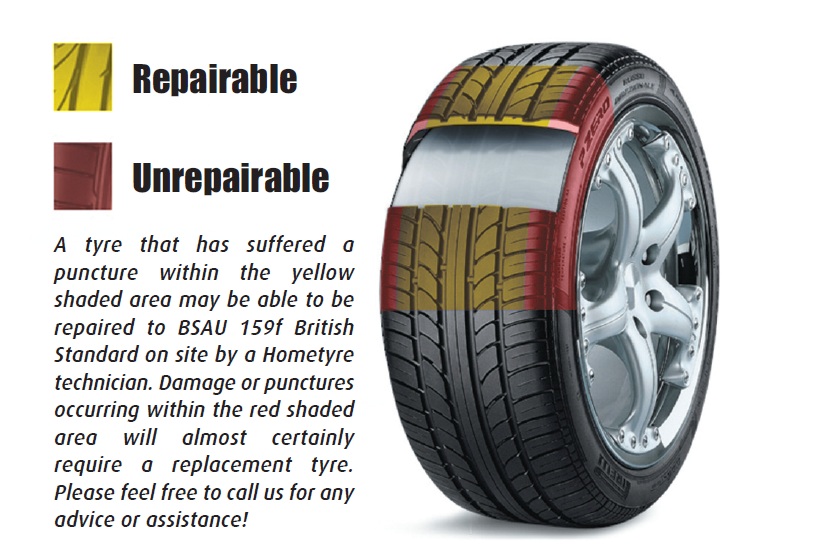 In this situation, if a puncture is detected, you can slowly drive to the tire fitting, having previously pumped up air.
In this situation, if a puncture is detected, you can slowly drive to the tire fitting, having previously pumped up air. Potholes or bumps in the road can be a serious problem. Hitting such an obstacle at high speed can lead to deformation of the car disk, subsequently to damage to the rubber. Very serious damage, which is impossible to fix on your own, without the use of special equipment, you need to go to a tire service.
Very serious damage, which is impossible to fix on your own, without the use of special equipment, you need to go to a tire service.
Use of used car tires - adhere to manufacturer's specified service life. Otherwise, the wheel may deflate due to high wear. There is a risk of explosion directly during operation.
Problems exist with tubeless tires - the fitting sometimes does not fit well on the disc, air leaks.
The main causes that lead to damage to car tires and air leakage are indicated. Whether it is possible to drive on a flat tire is determined by the driver himself, taking into account his experience and capabilities.
Driving with a flat tire is not recommended. Driving a car is significantly more difficult, there is a risk of getting into an accident, creating a threat to other road users.
Among the main problems that driving with low tire pressure can cause are:

A flat tire is a serious hazard. Each driver must understand this and take all necessary measures to eliminate the problem. In no case should a puncture be ignored, at high speed the situation can completely get out of control. The ideal would be to replace the wheel with a spare, repair at the nearest tire shop.
A car tire is a complex system. Consists of different elements. Manufacturers use special technologies and materials to provide the declared driving characteristics of the car. The special pattern on the main part of the tire has its own functionality, and does not serve solely for beauty. Any deviation from the norm leads to a decrease in the functionality of the tire, respectively, the car loses its qualities. Its use becomes unsafe until the problem is solved.
Winter Drive protection
Tires Goodyear UltraGrip Arctic 2 SUV
Winter Drive Protection Sound Comfort
Rating:
4. 5
5
Tires Goodyear UltraGrip Ice 2
Winter Drive protection
Tires Goodyear UltraGrip Performance+ SUV
Winter Drive protection
Tires Goodyear UltraGrip Arctic 2
Winter Drive Protection Run On Flat Sound Comfort
Tires Goodyear UltraGrip Performance+
It is worth noting that under no circumstances should you drive with a completely flat tire.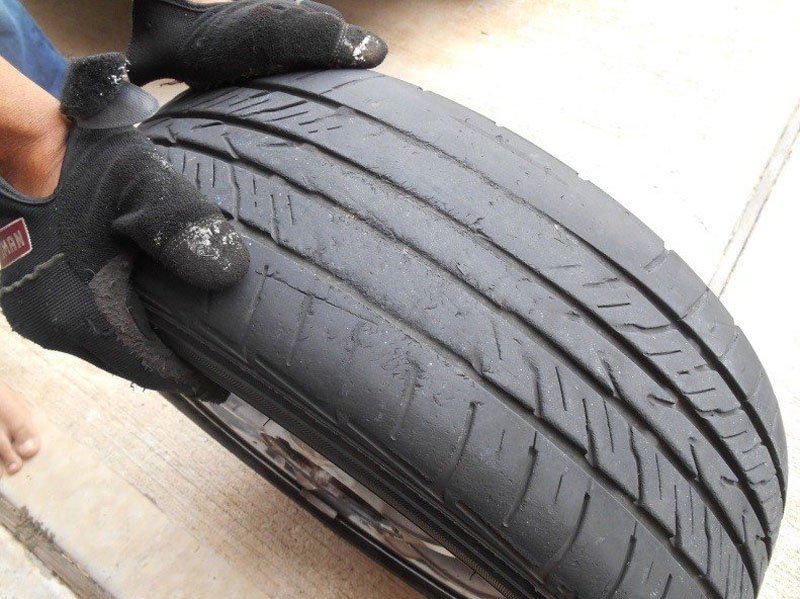 The situation can get out of control of the driver at any time, the tire will fly off the disk, he will receive damage that will lead to new problems. It's best to call a tow truck, no matter the cost.
The situation can get out of control of the driver at any time, the tire will fly off the disk, he will receive damage that will lead to new problems. It's best to call a tow truck, no matter the cost.
An exception to the rule may be a tire that still has some air left in it. You can try to get to a service station or tire fitting. You can also try to inflate the tire to give yourself more time.
Low pressure driving is possible subject to the following rules:
The average distance allowed to drive with a half-flat tire is 10 kilometers. This is only allowed if the above rules are observed.
Delays in dealing with low tire pressure, punctures or other damage will result in negative consequences. The following systems may experience problems:
The following systems may experience problems:
A vehicle with flat tires is a danger to other road users and its driving characteristics are affected.
It must be understood that movement with insufficient pressure leads to deformation of the rubber. You run the risk of completely damaging the tire, subsequently replacing it with a new one. Therefore, the decision to drive on half-flat tires must be made carefully, carefully evaluate all the consequences and alternatives.